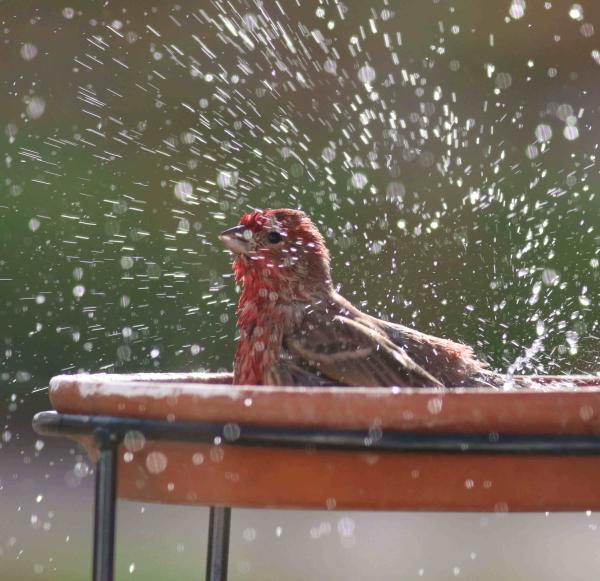

Cities attract their own communities of birds, and urban neighborhoods provide habitat for a variety of birds. Depending on your location across North America, common species may include Mourning Doves, House Finches, American Robins, Northern Cardinals, Downy Woodpeckers, Anna’s or Ruby-throated Hummingbirds, and many more. Urban birds also include introduced species such as House Sparrows, European Starlings, and Rock Pigeons, all of which add life and color to urban settings. We all enjoy seeing a flock of Rock Pigeons take flight and appreciate the variety of colors individuals possess.
Birds that inhabit urban areas tend to be more limited in variety and numbers, but this situation can emphasize a need for urban green spaces. Certainly, the value of Central Park in New York City to birds and birders can best be appreciated when you see the lists of migrating songbirds and flycatchers that stop there during spring and fall migrations, not to mention the park’s importance to nesting and wintering birds. Obviously, people benefit as much or more than birds from parks and other green spaces, but it’s definitely a mutual appreciation.
Urban birding includes all aspects of backyard birding, including offering fresh water, a variety of feeders and bird foods, a nest box or two, and some level of landscaping. Landscaping may be limited by space, especially if you live in an apartment or a home with limited yard space, but a single potted plant can benefit and attract certain birds; for example a potted trumpet vine, or potted sunflowers. But ultimately, never underestimate the importance of providing water for birds, or the attraction of birds to a simple bird bath or a simple elevated pan of water.
Some urban neighborhoods utilize unused properties as garden spaces; perhaps adding some plants to benefit birds might be appropriate in some areas, and such an effort can be the catalyst to community birding projects.
Actually, there is a wonderful Cornell Lab website that is appropriately named “Celebrate Urban Birds,” aka CUB. This website provides a wealth of information for urban birders, as well as would-be birders — people interested in birds but who need a little more information to get started or get deeper into the activity. The CUB web pages provide insights into a variety of urban birding options that vary from identifying and counting birds in your area to organizing community events and even applying for mini-grants to plan and promote urban birding activities.
CUB also has an excellent Latino and Latin American angle, so people living in Puerto Rico, Mexico, and other Spanish-speaking countries can get more involved. Even if you’re not Spanish-speaking, it’s interesting to check out the Spanish web pages and the accompanying photos. Birding, including backyard birding, is another way for everyone to take greater pride in our homes, our yards, and our neighborhoods — a fun way, a great way.
For more information about urban birds and urban birding opportunities, explore the CUB website and web pages at https://celebrateurbanbirds.org/
Share your backyard birding experiences and photos at editorstbw2@gmail.com










